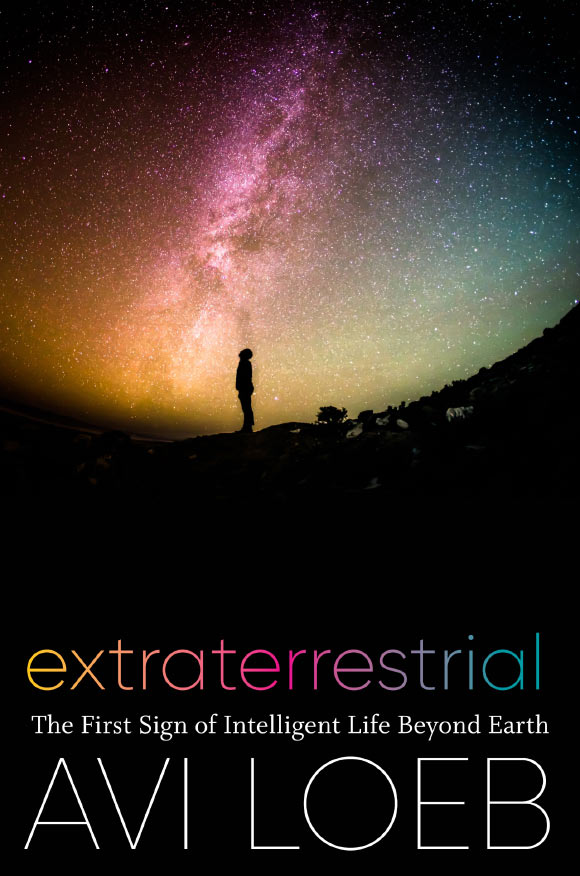Professor Abraham (Avi) Loeb of Harvard University believes that 1I/2017 U1 ‘Oumuamua, a fast moving, cigar-shaped object of extrasolar origin discovered close to Earth in October 2017, was most likely ‘a piece of advanced technology created by a distant alien civilization.’
‘Oumuamua was discovered by the University of Hawaii’s Pan-STARRS 1 telescope on October 19, 2017, more than a month after it passed its closest point to the Sun.
“Long before we knew of its existence, the object was traveling toward us from the direction of Vega, a star just 25 light-years away,” Professor Loeb writes in his upcoming book, Extraterrestrial: The First Sign of Intelligent Life beyond Earth.
“It intercepted the orbital plane, within which all of the planets in our Solar System revolve around the Sun, on September 6, 2017. But the object’s extreme hyperbolic trajectory guaranteed it would only visit, not stay.”
“On September 9, 2017, the visitor reached its perihelion, the point at which its trajectory took it closest to the Sun.”
“Thereafter, it began to exit the Solar System; its speed far away — relative to our star, it was moving at about 94,800 km per hour (58,900 miles per hour) — more than ensured its escape from the Suns gravity. It passed through Venus’s orbital distance from the Sun around September 29 and through Earth’s around October 7, moving swiftly toward the constellation Pegasus and the blackness beyond.”
Subsequent detailed observations conducted by multiple space- and ground-based telescopes detected the sunlight reflected off the surface of ‘Oumuamua.
Large variations in its brightness suggested that the interstellar object is highly elongated and up to 275 m (900 feet) in its longest dimension.
The object also experienced a small but persistent acceleration that could not be explained simply by the Sun’s gravitational pull.
“As soon as the observatory in Hawaii announced its discovery, and even as ‘Oumuamua was fleeing toward the outer Solar System, astronomers around the world trained a variety of telescopes on it. The scientific community was, to put it mildly, curious,” Professor Loeb writes in the book.
“One pressing question was: What did ‘Oumuamua look like? We did not, and do not, have a crisp photograph of the object to rely on. But we do have data from all those telescopes that were dedicated for about 11 days to collecting whatever they could.”
“And once we had our telescopes trained on ‘Oumuamua, we looked for one bit of information in particular: how ‘Oumuamua reflected sunlight.”
“For astrophysicists, an objects changing brightness provides invaluable clues to its shape. In the case of ‘Oumuamua, the objects brightness varied tenfold every eight hours, which we deduced to be the amount of time that it took to complete one full rotation,” he adds.
“This dramatic variability in its brightness told us that ‘Oumuamua’s shape was extreme, or at least five to ten times longer than it was wide.”
“To these dimensions, we added further evidence about ‘Oumuamua’s size. The object, we could say with certainty, was relatively small.”

Professor Loeb takes us inside the mind-blowing story of the first interstellar visitor to our Solar System.
In Extraterrestrial, Professor Loeb shows that ‘Oumuamua is neither a comet nor an asteroid.
He says there is only one conceivable explanation: the object is a piece of advanced technology created by a distant alien civilization.
“Our civilization has sent five man-made objects into interstellar space: Voyager 1 and Voyager 2, Pioneer 10 and Pioneer 11, and New Horizons,” he writes.
“This fact alone is suggestive of our unlimited potential to venture far out. So too is the behavior of our more distant ancestors.”
“And if other civilizations developed out there among the stars, wouldn’t they have felt that same urge to explore, to venture past familiar horizons in search of the new? Judging by human behavior, that would not be surprising in the least.”
Professor Loeb’s book is set to be published by Houghton Mifflin Harcourt on January 26, 2021.
_____
Avi Loeb. 2021. Extraterrestrial: The First Sign of Intelligent Life beyond Earth. Houghton Mifflin Harcourt, ISBN-10: 0358278147








